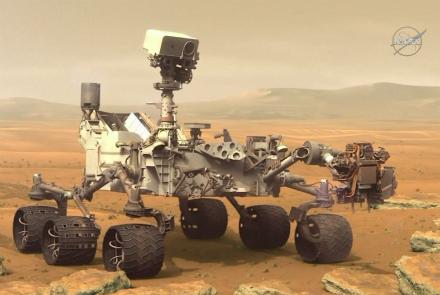A NASA rover has detected a bonanza of organic compounds at the surface of Mars and seasonal fluctuations of atmospheric methane in findings released on Thursday (June 7) marking some of the strongest evidence ever that Earth's neighbor may have harbored life.
But NASA scientists emphasized there could be non-biological explanations for both discoveries made by the Curiosity rover at a site called Gale crater, leaving the issue of Martian life a tantalizing but unanswered question.
Three different types of organic molecules were discovered when the rover dug just 2 inches (5 cm) into roughly 3.5 billion-year-old mudstone at Gale crater, apparently the site of a large lake when ancient Mars was warmer and wetter than the desolate place it is today.
Curiosity also measured an unexpectedly large seasonal cycle to the low levels of atmospheric methane. About 95 percent of the methane in Earth's atmosphere is produced from biological activity, though the scientists said it is too soon to know if the Martian methane also is related to life.
Organic molecules are the building blocks of life, though they can also be produced by chemical reactions unrelated to life, and the scientists said it is premature to know whether or not the compounds were created in biological processes.
Whether anywhere other than Earth has harbored life, perhaps in microbial form, is one of the paramount questions in science.
"There are three different sources organic materials," said astrobiologist Jennifer Eigenbrode of NASA's Goddard Space Flight Center in Maryland.
"One of them is the biology. One of them could be meteorites that are in falling into the surface and being directly deposited. And the other one is a rock forming processes that might generate organic matter all on their own."
The rover, which has allowed scientists to explore whether Mars ever boasted conditions conducive to life, in 2014 made the first definitive detection of organic molecules, also in Gale crater rock formed from ancient lake sediment, but it was a much more limited set of compounds.
"Those organic molecules could have come from life. We don't know that there was ever life on Mars," Eigenbrode said.
Christopher Webster, an atmospheric science research fellow at NASA's Jet Propulsion Laboratory in California, said it is possible existing microbes are contributing to the Martian atmospheric methane.
"The biological option is being held and that hasn't been ruled out," Webster said.
The amount of methane peaked at the end of summer in the northern hemisphere at about 2.7 times the level of the lowest seasonal amount.
The scientists were surprised to find organic compounds, especially in the amounts detected, considering the harsh conditions including bombardment of solar radiation on the Martian surface. After drilling, Curiosity heats the rock samples, releasing the compounds.
The scientists hope to find better preserved organic compounds with Curiosity or other rovers that would allow them to check for chemical signatures of life.
The solar system formed about 4.5 billion years ago. The research was published in the journal Science.

